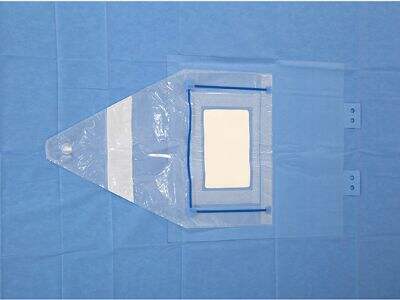When we go to the doctor or the hospital, we might see healthcare workers wearing special clothing called disposable surgical gowns. These are the gowns that help keep the workers safe and stop the spread of germs. It’s crucial for everyone to learn how to put on and take off the gowns and to dispose of them effectively to continue to stay safe and healthy.
Significance of Appropriate Management and Recycling of Medical Gowns
Disposable surgical gowns serve in protecting medical professionals and patients against transfer of micro-organisms. After the gowns have been used, they must be disposed of properly to avoid transmission of germs. If not disposed of properly, surgical gowns can become contaminated and spread diseases.
It is also worth considering recycling surgical gowns. And after we are done with these gowns, we can recycle them, making the world a better place for all sort of living things. Xuhe is concerned with the environment and suggests recycling as much as possible. Keep in mind: by discarding and recycling these surgical gowns correctly, we can all take steps to stay safe and protect our planet.
Step-by-Step Procedures for Donning and Doffing Disposable SurgicalGowns
Wearing, or wearing, disposable surgical gown is a good choice for avoiding pollution life. First, be sure to wash your hands before handling the gown. Then, securing the gown in place, put on your gown, ensuring you’re fully covered. Tie the robe closed to ensure it stays in place.
And just as crucially, there is the doffing, or taking off, of a disposable surgical gown. After you’re finished with the gown, untie it gently and avoid touching the outside of the gown. Put the gown in the appropriate receptacle, and then wash your hands to keep viruses from spreading. Adhering to these steps can help you protect yourself and others.
Patient Gown Sterile and Non-Sterile-How to differentiate?
Disposable surgical gowns are also widely classified as being sterile and non-sterile. Sterile gowns are required for sterile environments, such as operating rooms, or when standing up to germs is a priority. Sterile gowns are utilized in higher critical environments, while non-sterile gowns in lower critical environments.
It’s crucial to know the distinction between sterile and non-sterile gowns to ensure proper use. Xuhe offers both forms of gowns to accommodate different uses in health care. Just remember to follow the directions you are given for the gown you are wearing and you will be dressed properly for the occasion.
Training end-users in appropriate infection control measures
Correct infection control techniques are critical in halting the spread of germs and disease. People who use disposable surgical gowns as end users need to be instructed on the right way to do so for a clean and safe atmosphere. Never forget the instructions and request assistance if you don’t know any.
Xuhe is dedicated to teaching your end users the appropriate infection control practices so everyone stays healthy and safe. TAKING PERSONAL RESPONSIBILITYBy collaborating on this and following guidelines we can all take personal responsibility for our safety and safety of others.
Training the End User in Best Practices for Cleaning and Storing Surgical Gowns
After use of a disposable surgical gown, there is another critical task. Store the gown in the dry and clean storage to avoid being polluted. If the gown is soiled or damaged, throw it away.
Xuhe medical for gown also offer training classes concentrating on good practices of keeping and storing the surgical gowns in order that the end users can be safe and protective. Following these tips will help keep the gowns effective and suitable for use in the future. And don’t forget to properly maintain and store your shoes to keep yourself safe and healthy.
In short, all of us should know how to wear disposable surgical gowns properly. You can help prevent further harm by following the steps above and becoming aware of best practices. Xuhe is here to help you be safe and healthy. Thanks for reading!

 EN
EN
 AR
AR
 BG
BG
 HR
HR
 CS
CS
 DA
DA
 NL
NL
 FI
FI
 FR
FR
 DE
DE
 EL
EL
 IT
IT
 JA
JA
 KO
KO
 NO
NO
 PL
PL
 PT
PT
 RU
RU
 ES
ES
 SV
SV
 TL
TL
 LT
LT
 SR
SR
 SK
SK
 SL
SL
 UK
UK
 VI
VI
 SQ
SQ
 HU
HU
 TH
TH
 AF
AF
 MS
MS
 GA
GA
 BE
BE
 HY
HY
 KA
KA
 BN
BN
 BS
BS
 UZ
UZ
 XH
XH
